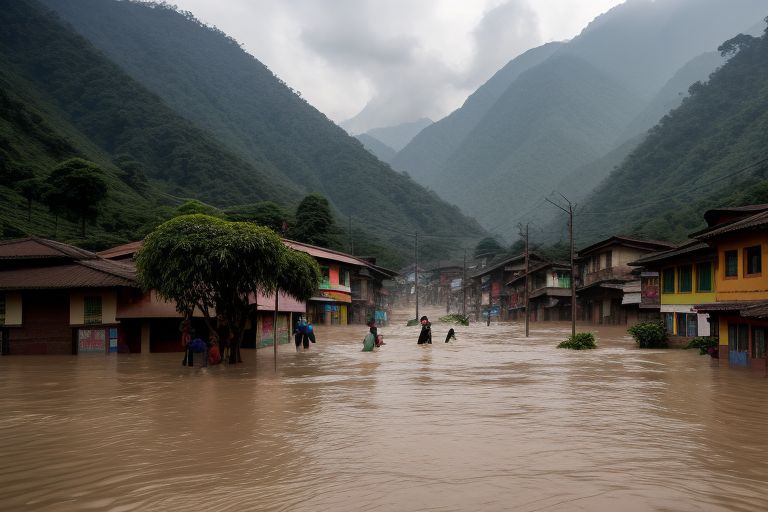Nepal is in the grip of nature fury again as monsoon rains show no sign of relenting and causes devastation throughout the country. Landslides, floods, lightning strikes in the past 24 hours 14 people died, this is reported by the National Disaster Risk Reduction and Management Authority. The monsoon falls between June and September and in the seventeen day this year it has already caused loss of 28 lives and 147 incidents were reported.
Un-favourable geographical features combined with poor population planning renders nepal highly susceptible to rain related calamities. F brig caused the most deaths with a total of 14 while lightning was the second most common killer with victims totaling to 13. Lamjung district has been the worst hit where five persons were buried alive in a single incident of landslide other districts which were also affected are Kaski and Okhaldhunga.
During the onset of the raining season or when one is in anticipation of, to, and through the monety, the government is of the opinion that one can be killed up to 1. This season could result in rain related mishap, hence, 8 million people might get trapped. It is even worse for the Terai region that is home to tens of thousands of its population who are vulnerable to floods each year. In the hills, the major form of natural disaster is the landslides which are often experienced most of the time during the monsoon season.
The government has only issued warnings and deployed its resources for rescuing people in the affected areas, the problems are still Punching. To compound this even further, the country’s infrastructure that was not very strong to begin with, is struggling to survive the ceaseless barrage of natural calamities. People’s homes lost property, bridges and roads were washed away; entire communities locked out of basic necessities such as food, water, and shelter.
Ambientalists social and climate have estimated that the situation may further degenerate in the next few weeks. The 28th Session of the South Asian Climate Outlook Forum monsoon forecast has suggested above normal rain for almost all the SA countries in this monsoon season they have willingly embraced. Further, there is higher likelihood of La Nina conditions over equatorial Pacific in the second half of the season which may lead to more enhancement of rainfall over the area.
As for Nepal dealing with these natural disasters the need for concerned authorities to work on enhancing the state of disaster preparedness as well as infrastructure is something that has never been more evident. It remains the herculean challenge for the government to not only assist those who are affected by the monsoon but try and assess how the same disasters can be prevented in the future as well.
As climate change intensifies the effect of the natural disasters, Nepal is at a greater risk of such occurrences in the future and this necessarily requires the country to integrate disaster risk reduction and sustainable development as a central part of its ongoing development processes.


